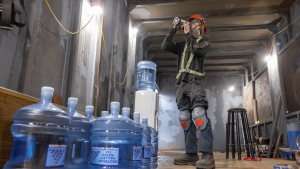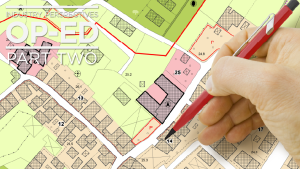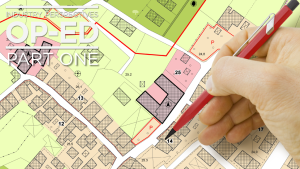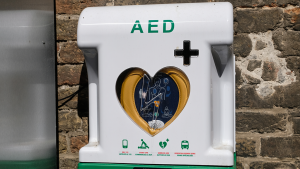As we mark Construction Safety Week 2025, it’s a time to reflect not just on the progress we’ve made on workplace safety — but also on where we need to go.
The construction sector continues to evolve and so too must our approaches to health and safety.
Construction remains one of the highest-risk sectors in B.C. Today’s jobsites are more complex than ever. We’re seeing a tightening labour market, increasing project demands, escalating costs, multi-employer worksites and an industry balancing physical risks with a growing awareness of psychological safety.

In response to this growing complexity, many of the industry’s most successful companies are embracing a key shift: moving beyond safety as a checklist of compliance measures and toward fully integrated health and safety management systems. These systems reflect the dynamic realities of today’s worksites and help embed safety into every aspect of planning and execution.
This shift is already delivering results and creating healthier, safer and more resilient worksites. At WorkSafeBC, we believe this broader, more proactive approach is essential to protecting workers today and strengthening the industry for tomorrow.
From “programs” to “systems”: What’s the difference?
Many in the industry are already well-versed in the evolution from safety programs to safety management systems and are seeing the benefits of that shift. But for those still making the transition, it’s worth revisiting what sets a system apart. Programs typically include fundamental activities like inspections, incident investigations, and training. These are essential building blocks.
A health and safety management system (OHSMS), such as one based on CSA Z45001, takes things further. It provides a framework that integrates safety into every part of your organization — through leadership commitment, risk assessments, organizational planning, worker participation and continuous improvement. In essence, the system supports the program by embedding safety into how work gets done.
Core components of an effective OHS management system
Whether you’re a large contractor managing a major infrastructure project or a small employer overseeing a residential build, the principles of an effective safety system apply:
- Leadership and commitment
- Robust health and safety planning
- Comprehensive site risk assessments and compliance evaluations
- Workplace inspections and incident investigations
- Regulatory requirement reviews
- Worker consultation and participation
- Ongoing self-evaluation and continuous improvement
These aren’t just administrative processes, they are mechanisms that enable safer decision-making, better communication and more adaptive responses to evolving risks.
Safety is a planning function
Construction professionals need to be exceptional planners, co-ordinating labour, materials, equipment and timelines with precision. It’s time to bring that same planning mindset to health and safety.
Health and safety planning must be integrated into project planning from the very beginning. That means conducting pre-job planning meetings to identify risks, allocate resources and establish controls before work begins. Whether it’s a single-family home, or a highrise tower, early-stage safety planning improves outcomes across the board.
Pre-job planning is also where employers have an opportunity to align on responsibilities, particularly on multi-employer worksites where lack of clarity around supervision and co-ordination can increase risk.
Orientation and oversight for a changing workforce
Today’s construction workforce is more diverse than ever, with a rising number of temporary foreign workers, young workers and individuals with varying levels of experience. They bring enthusiasm and passion but also a pressing need for strong orientation, clear task-specific training and consistent supervision.
For those reasons, it’s essential to assess each worker’s qualifications and competencies before assigning tasks. Site leaders and supervisors must go further creating an environment where newer workers feel empowered to ask questions, speak up about hazards and stop work if something doesn’t feel right.
Managing physical, health, and psychological risks
A comprehensive safety system must address more than just physical hazards. Occupational exposures and psychological safety risks are increasingly recognized as key components of worker wellbeing.
Leaders set the tone for psychological health and safety on the jobsite. When they create an environment where workers feel safe speaking up, supported by their supervisors and peers, it builds trust and a stronger team.
Effective leadership also means engaging workers in shaping safety practices, which is key to creating a culture where everyone takes ownership of safety, every day.
The hidden costs of not prioritizing safety
Investing in health and safety management systems helps protect your workforce and your bottom line. It’s a business decision as much as a moral one.
Safety incidents and worker injuries lead to job interruptions, project delays, rehiring, retraining and even reputational damage. In a competitive construction market, operational resilience includes a strong safety program — and that can mean the difference between winning and losing the next contract.
Build it in, don’t bolt it on
Safety must be embedded at every level of your organization from senior leaders to front line workers. Whether you’re co-ordinating multiple employers on a large project or managing a small team on a tight timeline, building safety into your planning, communication and leadership practices will protect your people and strengthen your outcomes.
Construction work can be complex but with the right systems in place, we can eliminate hazards and effectively control the risks. By learning from each other and leading together, the industry as a whole can broaden its view of safety and manage it more effectively.
While construction employers may compete on product, we know safety isn’t a competition. In that spirit, we encourage industry leaders to share their approaches, collaborate openly and help raise the bar across the construction sector. When safety improves for one, it improves for all.
For more resources on implementing health and safety management systems, visit .
Todd McDonald is head of prevention services at WorkSafeBC. Send Industry Perspectives Op-Ed comments and columns ideas to editor@journalofcommerce.com.











Recent Comments